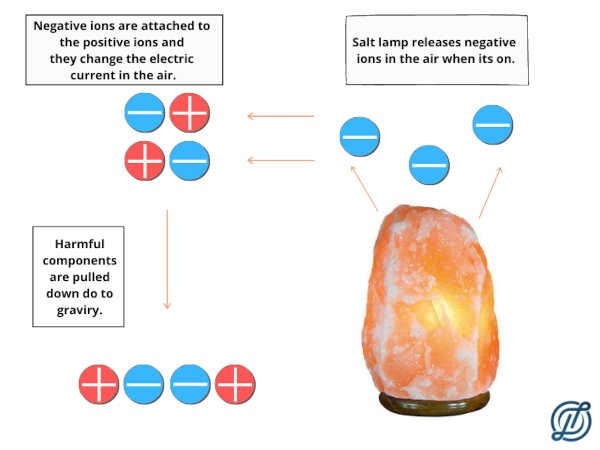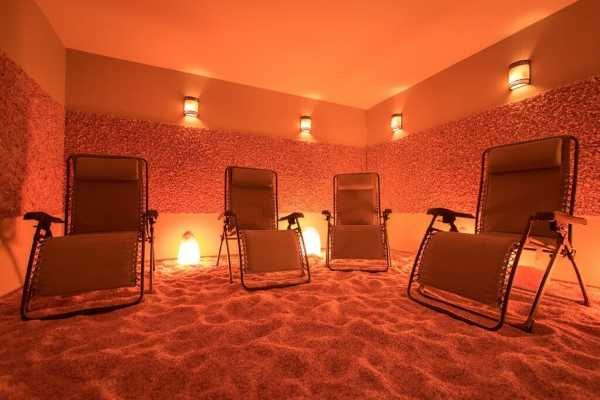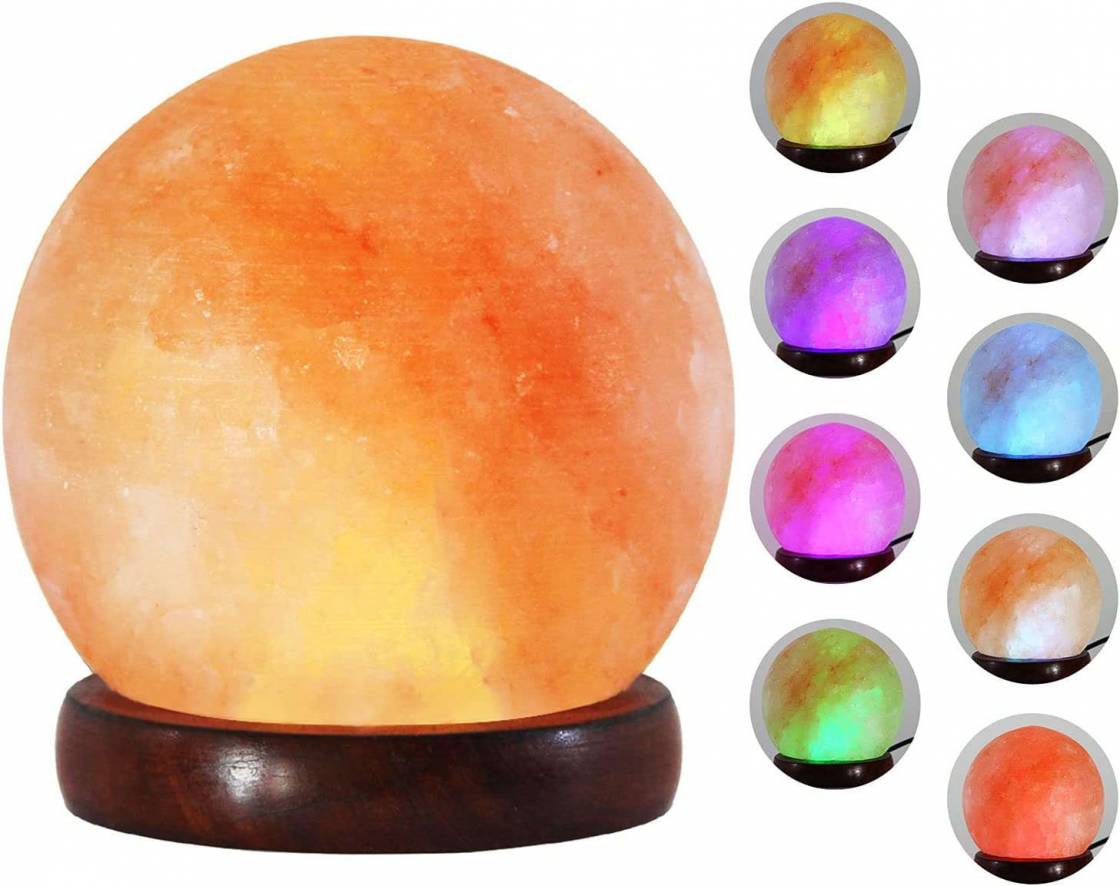Today’s blog is all about the pros and cons of Himalayan salt lamps.
In recent years, there has been a significant shift towards the desire to maintain our health and even clean our homes through natural, less chemically derived means. One such item that has rapidly grown in popularity is Himalayan salt lamps.
Advocates of their use point out that these lamps can be used to clean the air in your home, reduce the symptoms of common health conditions, and improve sleep and mood.
Is there any truth behind this? Let’s find out!
Objective Pros And Cons of Himalayan Salt Lamps:
Pros
- It may help purify the air
- It may help with common respiratory ailments
- Improved mood and sleep
Cons
- Salt lamps are very fragile
- It may leak water
- It may be dangerous for pets
Looney lumens is reader-supported and participates in the Amazon Associates Program. When you buy a product through links on our site, we may earn a small commission, at no extra cost to you.
The Pros of Himalayan Salt Lamps:
They May Help Purify the Air
The most discussed pro of a Himalayan salt lamp is its ability to purify the air.
Himalayan salt lamps are believed to attract pollutant-filled vapor along with dust and debris that may have been brought into your house from outside, either on your clothes or via your pets. The Himalayan salt lamp attracts this vapor.
Once it comes into contact with the lamp, the harmful particles are trapped within the lamp, and water vapor is released.
There is currently little evidence to show if a salt lamp can purify the air better than a traditional charcoal air filter.
It May Help with Common Respiratory Ailments
Common allergy symptoms such as sneezing, sinus congestion, and coughing are often triggered by allergens such as dust mites, pet dander, mold, and pollen, among others.
Salt lamps are believed to reduce allergies and asthma by increasing the number of negative ions in the room.
The few studies conducted on this topic have shown ions do little to alleviate these common respiratory ailments.
Himalayan Salt Lamps hand-picked for you:
Improved Mood and Sleep
The light emitted by Himalayan salt lamps is soothing. The negative ions thought to be released by a Himalayan salt lamp are believed to ease stress and anxiety while increasing serotonin.
To date, studies have shown minimal effects on mood and sleep.
However, the warm glow of a Himalayan salt lamp can also be used to help set the mood for meditation, or yoga, or to help you relax.
The Cons of Himalayan Salt Lamps:
Salt Lamps Are Very Fragile
Himalayan salt lamps are incredibly fragile due to their being composed of salt crystals.
Salt crystals require minerals to bind them together, and once mined, the crystals used in salt lamps lack this support of minerals needed.
They May Leak Water
Salt lamps tend to attract water when placed in humid areas. This is due to how they attract in the air and give off water vapor in return.
That said, electricity and water do not mix well.
Therefore, to avoid a potential hazard, salt lamps should not be placed or used in humid areas or rooms.
When the lamp absorbs water, it causes the natural salt from the lamp to wash down the surface and pool at the bottom of the lamp base.
Salt is naturally corrosive; therefore, the pooling water can damage the furniture where the lamp is sitting. If the surface is metal instead of wood, the pooling water will likely cause the surface to rust.
They May Be Dangerous for Pets
Salt lamps can cause salt toxicity in pets.
While both cats and dogs are at risk for salt toxicity, cats tend to be more likely to jump onto the surfaces where salt lamps are placed and are at a greater risk of coming into contact with the lamp or licking the lamp and developing salt toxicity.
Salt toxicity can cause significant medical issues if not properly treated.
How Do Himalayan Salt Lamps Really Work?
Salt lamps are thought to provide health benefits due to their action as a natural ionizer.
Electrically and battery-operated ionizers work to change the electrical charge of the air circulating in a room. In doing so, they release negative ions into the air, which would help eliminate dust particles that may harm your health.
Himalayan salt lamps are believed to release negative ions into the air, reducing positive ions’ adverse health effects.

There is currently little evidence to support using a Himalayan salt lamp exclusively for this purpose. One salt lamp alone cannot produce enough negative ions to purify the air.
Many promote the use of salt lamps (or salt therapy) to improve respiratory health. As they draw air particles to them, salt lamps absorb impurities and emit water vapor.
It is believed that breathing in the salty water vapor produced by the salt lamp (even more so in salt caves or spas that provide halotherapy) can help kill off microorganisms in the lungs and reduce inflammation from illness or disease and decrease mucus to improve breathing.

As with statements around air purification, there are no evidence-based studies to verify these statements’ efficacy.
One other effect of Himalayan salt lamps lies in how they improve mood. Salt lamps produce a warm, calming glow that can help the user relax and unwind.
One unconventional use for a Himalayan salt lamp is as an aromatherapy diffuser.
When the lamp is on, the salt crystal heats up. Once this happens, you can use the lamp as a diffuser by adding a few drops of your favorite oil directly to the lamp.
This diffusing method may also help clear up seasonal allergies, and sinus issues, or even help you relax through the healing benefits of the various essential oils you may select.
The warm glow of the lamp can also help to lift your mood. The natural, amber-colored light is used by spiritualists and holistic healers to help induce a state of calm and reduce anxiety.
However, there is minimal medical evidence that points to salt lamps mitigating mental health symptoms.
How to Spot Fake Salt Lamps
As salt lamps have grown in popularity, so have the number of “fake” versions for sale in stores and online.
If you are not sure if a lamp is real or fake, there are a few things you can do:
- If your lamp was inexpensive, it may not be real. While authentic lamps are not cost-prohibitive, they often cost around $50 or $60. If a lamp is selling for less, it may be counterfeit.
- Another way to spot a fake is by brightness. A real Himalayan salt lamp will have a warm, pink, or amber color. Consequently, the glow of the lamp will be soft and uneven. If the lamp is bright or the patterns displayed on the walls from its glow are even, it is not real.
- Other signs of a counterfeit lamp may include the lamp being hard to break.
- Its moisture handling capabilities are “too good.”
- The country of origin is not Pakistan. Authentic Himalayan salt comes from one mine in Pakistan and nowhere else in the world.
Frequently Asked Questions
– What is a Himalayan salt lamp?
Himalayan salt lamps are beautifully crafted decorative crystals that can be placed anywhere in your home. They are made by placing a light bulb inside large randomly shaped chunks of pink Himalayan salt. When lit, they have a warm pink glow.
– How to care for Himalayan salt lamps?
Salt lamps require very minimal maintenance or cleaning. All you need is a damp cloth or sponge to clean the lamp every couple of weeks. Also, keeping your lamp on helps to keep it clean well.
– Do Himalayan salt lamps actually work?
Salt lamps are beautiful decorative additions to your home.
However, there is currently minimal evidence that they significantly impact air quality or respiratory illness.
– Are salt lamps safe to leave on?
It is recommended to leave your lamp on as often as possible. This helps to reduce water and salt shedding by the lamp.
Also, they have a very low wattage bulb making them safe to keep turned on.
– How long does the Himalayan salt lamp last?
A salt lamp will last well beyond its user’s life if not broken because of a fall.
– Are Himalayan salt lamps dangerous?
Salt lamps can be a falling hazard due to their weight, and they can be mildly hazardous to children (if they ingest the salt).
However, salt lamps are generally considered very safe.
– Are Himalayan salt lamps safe for pets?
As noted above, salt lamps can be dangerous for pets if they ingest the salt in large quantities. To ensure safety, keep your lamp in a place your pet cannot reach or is unlikely to go.
– Do salt lamps really clean the air?
There is currently no scientific evidence to verify salt lamps’ ability to clean or purify the air.
– Why does a salt lamp leak water?
Salt lamps draw moisture in from the air and emit water vapor as a result. This can be limited by leaving the lamp on as often as possible to allow a heat source to evaporate collected moisture.
– Can salt lamps make you sick?
To date, there is no scientific research showing salt lamps are responsible for any illness.
Resources:
Author: Anisha Rao

Anisha Rao, MPP is passionate about mental and public health and improving access to affordable and quality care.
She is a Certified Lean Six Sigma Green Belt Healthcare Professional who has consulted over 500 clients. She also passionately creates content to inform readers about products, services, and resources that may help them live their best lives.



